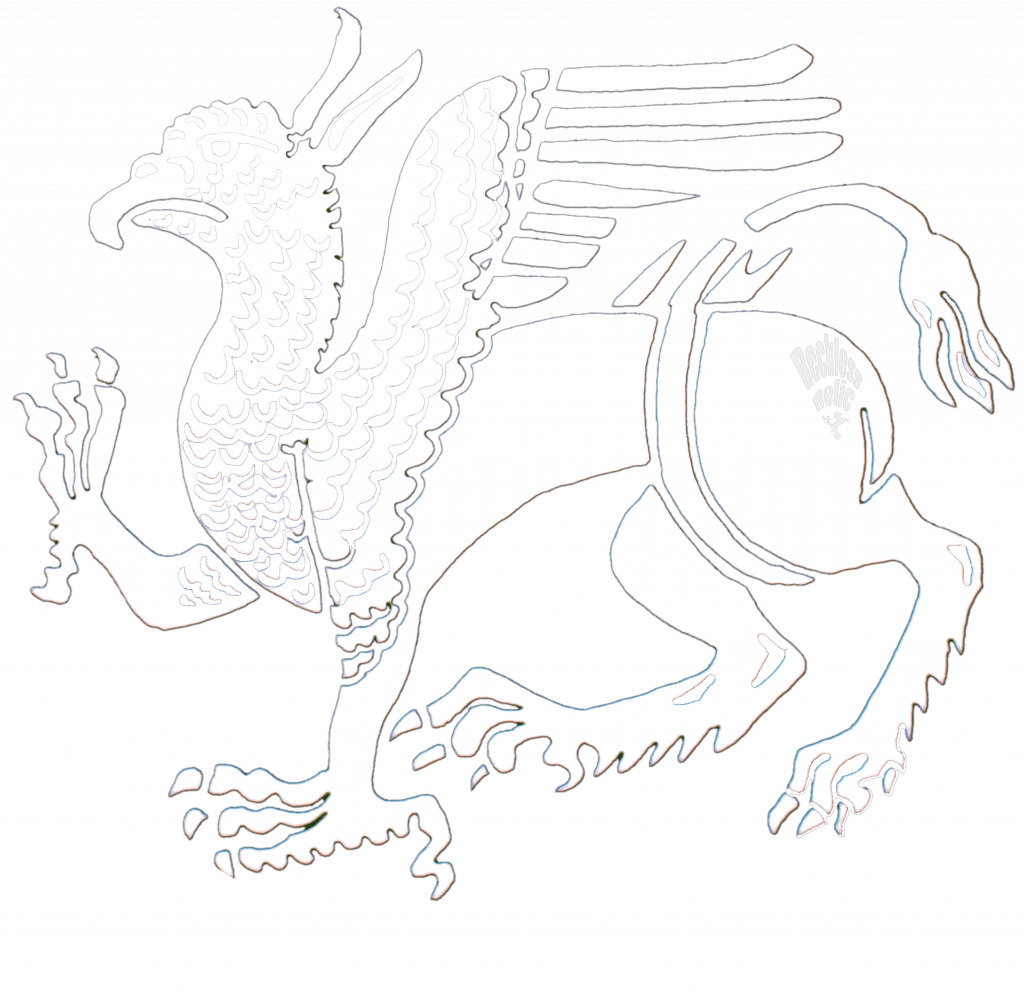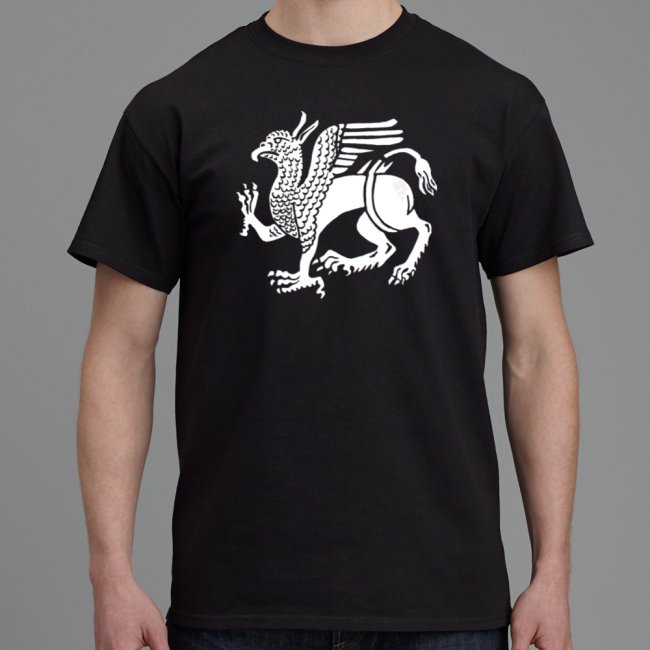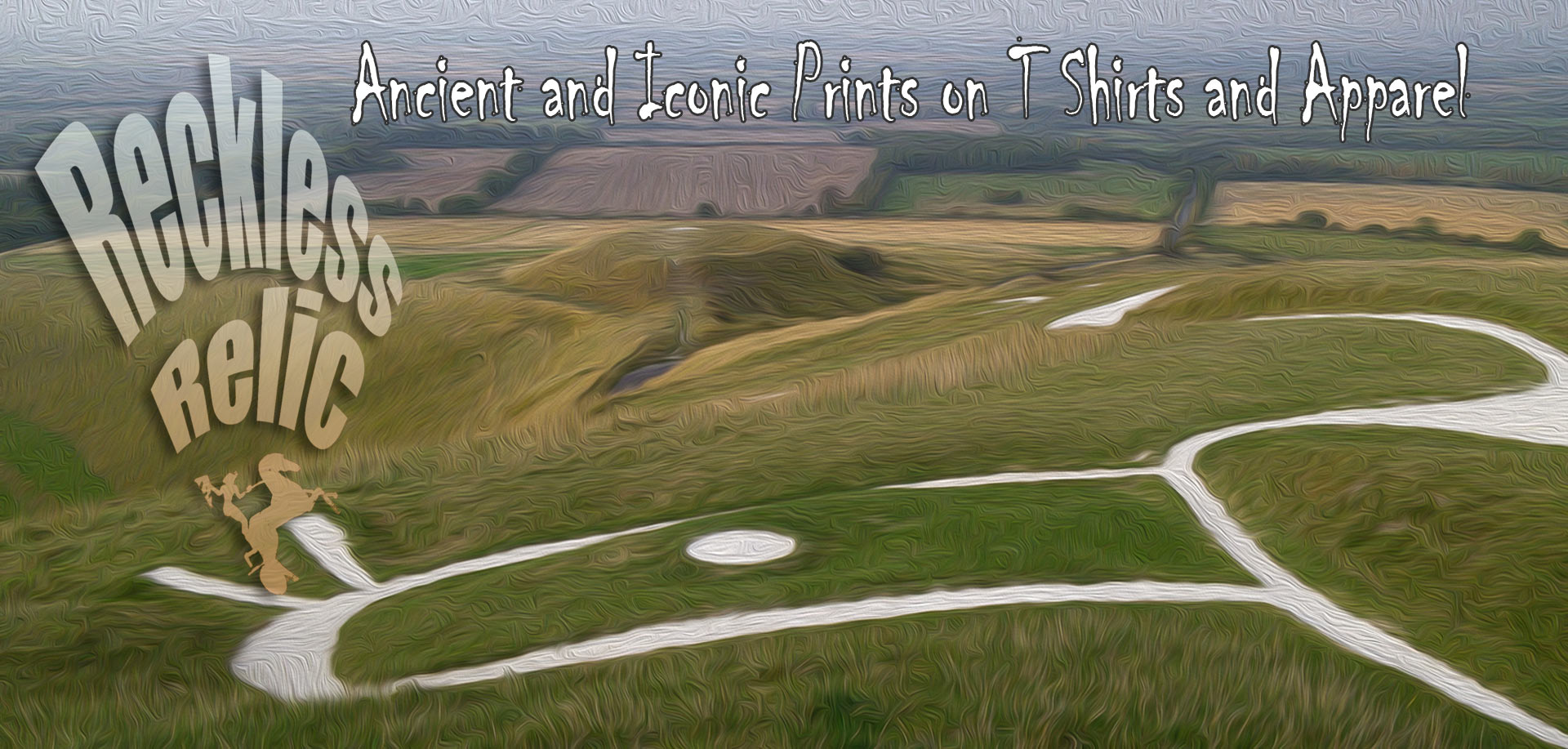A legendary creature with the body, tail, and back legs of a lion; the head and wings of an eagle; and an eagle’s talons as its front feet. In heraldry, the griffin’s amalgamation of lion and eagle means courage and boldness. It is used to denote strength and military courage and leadership.
The eagle was considered the ‘king of the birds’, and the lion the ‘king of the beasts’, thus the griffin is perceived as a powerful and majestic creature. During the times of the Persian Empire, the griffin was seen as a protector from evil, witchcraft, and slander. The griffin is often seen in medieval heraldry, but its origins stretch much further back, for instance, the ancient Greek historian Herodotus wrote:
“…in the north of Europe there is by far the most gold…..it is said that one-eyed men called Arimaspians steal it from griffins” (Herodotus, The Histories , 3.116)
Thus griffins featured in the art and mythology of Ancient Greece, but there is evidence that they were represented in ancient Persia and ancient Egypt – dating to as early as the 4th millennium BC. On the island of Crete, frescoes of griffins were discovered in the ‘Throne Room’ of the Bronze Age Palace of Knossos which dates back to the 15th century BC.
There is a theory that the concept of the griffin was brought to Europe by traders travelling along the Silk Road. Hailing from the Gobi Desert in Mongolia the traders may have interpreted fossils of a dinosaur called the ‘Protoceratops’ as griffin remains, as the mythical animal was already known to them before the Silk Road was developed.
Because Herodotus and Pliny describe the griffin as a real, earthly animal, the medieval Christians did not regard the Greek “gryphes” as having pagan significance. The 7th-century encyclopedist, St. Isidore of Seville, lists the “gryphon,” along with a scientific description of the beast, in his compendium of known animals, and later Sir John Mandeville claims he saw griffins on his travels.
Medieval Christians, then, embraced the griffin as a creature made by God, and the Griffin became a rich symbol of the two natures of Christ – the eagle, lord of the sky, symbolizes the divine nature, while the lion, lord of the earth symbolizes human nature. Combined they represented to the medieval mind the concept that the ‘Lord is the true King of the heavens and the earth.’ Also, St. Isidore notes, “Christ is Lion because He reigns and has strength; Eagle, because after the Resurrection He rises into Heaven.”

Medieval floor tiles were used extensively in churches, cathedrals and grand houses. Such tiling was a display of wealth, as they were expensive to make. Thus the earliest commissions were for paving royal palaces, the houses of rich laymen, and ecclesiastical and conventional buildings. Most decorated tiles date from the thirteenth century, when craft skills increased and production costs fell, before this, British-made floor tiles were fairly plain.
The tile makers were often journeymen who travelled around the country making tiles close to where they were required. It is likely that most parishes had a brick or tile kiln at some stage and some monastic buildings even had their own kilns.
How they were made
Initially the raw clay was cleaned of stones and organic matter. It was then soaked and ‘pugged’ before being weighed, then wedged into a square shape and placed into the mould to form the tile. The tile was then stamped to reproduce the pattern in relief, leaving an impression in the surface of the soft clay. Keyholes were also cut into the back at this stage to aid drying and help the tile to ‘key’ to the mortar, when finally installed.
The impressed pattern was filled with a white ‘slip’, a fluid clay mix, and left to dry. When ‘leather hard’, the excess slip was cut back, revealing the clear definitions of the pattern. The tiles were then left to completely dry out for three to four weeks. This was mainly suited for dry, warm, summer work. After drying, glaze was brushed onto the surface of the tiles which were then fired, using a wood fired kiln.
Decorated tiles were made this way until the sixteenth century when much patronage of the trade was lost with the dissolution of the monasteries. By this time also, the wealthier classes were starting to favour brighter coloured tin-glazed ceramics and tiles from Europe.
Winchester Cathedral has the largest area of 13th century inlaid tiles still in their original position in England. Fine examples of tiles can be found in the British Museum and the Ashmoleam Museum and other places around Britain.

Gryphon or Griffin
A design based on a medieval floor tile, the legendary griffin symbolized courage, boldness and leadership.
Durable double cotton stitched t-shirt
References and links:
